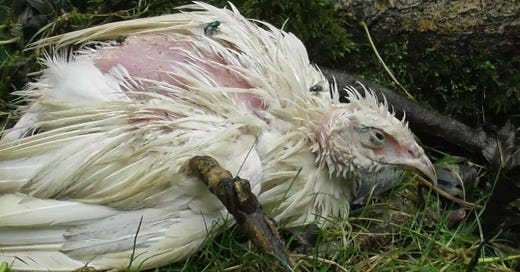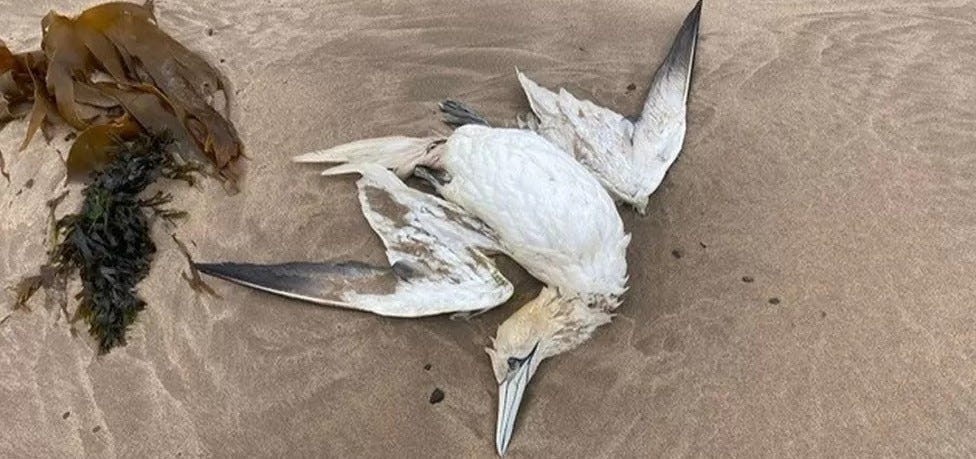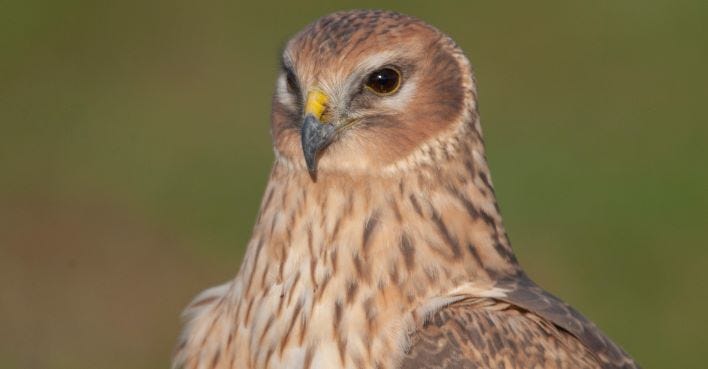Avian Flu: is the government serious about protecting wild birds?
Or just protecting the shooting industry...
Avian flu is spreading fast: Protect the Wild wonders whether the government is really serious about protecting wild birds, not just poultry.
Avian Flu, or (HPAI) H5N1, is a highly contagious viral disease affecting the respiratory, digestive and/or nervous system of many species of birds. A disease originating in East Asia, Avian Flu infected chickens in the region’s vast, unsanitary poultry sheds where non-existent biosecurity (including the sluicing of faeces straight into local waterways) allowed the virus into the environment. Essentially contained within China, South Korea, and parts of Russia more than a decade ago, the virus has spread and this summer has been tearing through populations of wild birds across Europe.
While typically fatal to birds, Avian Flu is not connected in any way with Covid-19 and infections in humans are rare: a total of just 239 cases of human infection from four countries within the Western Pacific Region since January 2003, of which 134 were fatal. Early reporting on the virus was often hyperbolic though, The Guardian for instance reporting as long ago as 2008 that “Britain faces 75,000 deaths in bird flu pandemic” and that the “Department of Health has stockpiled enough of the antiviral drug Tamiflu to cover a quarter of the population” in case a zoonotic disease like ‘bird flu’ transferred into people – leading to mass infections, high mortality, and overwhelmed hospitals etc (a warning that came a decade too soon and was ignored anyway).
A non-human pandemic
Despite the ravages of Covid-19, the panic that Avian Flu might cause another pandemic in humans has subsided but the disease has meanwhile been hitting wild bird populations across Europe and the UK very hard.
The largest and longest outbreak experienced in the country, by the end of the summer the disease had been found in over sixty species. It has especially impacted rare seabirds already declining from the effects of over-fishing and warming seas. Breeding populations of a number of seabird species listed as Great Britain Birds of Conservation Concern (BoCC5), including Red-listed Roseate Terns and Atlantic Puffins, as well as Amber-listed Northern Gannets and Eiders, have been hit especially hard. Colonies of Amber-listed Great Skuas on St Kilda and the Shetlands were decimated (60% of the world’s population of Great Skuas breed on Scottish Islands).
The disease shows no sign of retreating. There have been 98 confirmed cases of highly pathogenic avian influenza (HPAI) H5N1 in England since 1 October 2022. With migration underway and huge numbers of ducks and geese arriving from as far away as Russia, the warnings have increased and measures to stop the spread (according to the government anyway) stepped up. In October a lockdown of sorts was imposed when biosecurity measures in the form of an Avian Influenza Prevention Zone (AIPZ) were brought in. On November 7th the government went further, declaring mandatory housing measures which meant that “all poultry and captive birds must be housed in England until further notice”.
That mention of ‘poultry’ appears to point towards where the government’s real concerns lie: protecting not wild birds but the poultry industry, a business that (let’s not forget) was responsible for killing 1.12 billion chickens in 2021 alone. The deaths of huge numbers of wild birds also appears to have been forgotten by large sections of the media which gave the disease good coverage in the summer. Attention has now turned – as it so often does – to commercial and retail concerns centred entirely on us. Will there be Turkeys available for Christmas? What compensation will there be for poultry farmers (who have been queuing up to mourn the loss of birds they were weeks away from packing up for the slaughterhouse anyway).
We live in one of the most nature-depleted countries on the planet: just a suggestion, but perhaps this tendency for the media to lose focus on what really matters is part of the explanation for that…
Shooting and Avian Flu
Another element that the national media seem to have missed (or purposefully ignored) is the role of the shooting industry in spreading Avian Flu.
Warnings that releasing upwards of 50 million pheasants and partridges into the wider countryside could spread Avian Flu were sounded by the RSPB back in August. The largest bird charity in Europe, the RSPB asked for a moratorium on releases that was totally ignored (and in some cases mocked by shooting lobbyists). Inevitably, by the 22nd of September ITV News was reporting that ‘…for the first time this year pheasants in Cornwall, Cheshire and Norfolk have tested positive for the H5N1 virus’.
That calls made by experts at the RSPB for restraint by the shooting industry were not heeded is even more surprising given that they are members of what the government describes as an Ornithological Expert Panel (OEP) on Avian Flu. Chaired by the Animal and Plant Health Agency (APHA) this ‘expert group’ consists of members of the RSPB, British Trust for Ornithology (BTO), Wildfowl & Wetland Trust (WWT), British Association for Shooting and Conservation (BASC), JNCC, Natural England, NatureScot, NRW and APHA itself.
Few members of that group will have more individual or collected expertise on the impact of Avian Flu on wild birds than the RSPB (or for that matter the BTO, which has a very good working relationship with the RSPB, and WWT who know more about migratory ducks and geese than any other organisation in Europe). Yet mass releases of birds for shooting weren’t banned and took place as usual in the late summer. Notably, there is still no specific ban on any further releases for the gun that the industry might want to make.
While the government does say that the Panel is an advisory group and “does not have decision-making powers”, you have to ask just how much influence BASC and the generally shooting-supportive Natural England and NatureScot had in overruling the wild bird experts (metaphorically at least) sat around the table with them. We welcome comments if anyone ‘in the room’ would like to get in touch and clarify the situation.
What about shooting now?
The government decided in early November that “at the time of publication wildfowling, driven game shooting and pigeon shooting activities are not considered to significantly increase the risk for long distance dispersal beyond that of routine movement of infected wild birds. Further updates to the risk assessment are in progress and will consider the shooting of pheasants.”
This ‘advice’ can only have been driven by shooting interests as it appears to focus on whether or not birds being shot at disperse widely and spread the virus. Leaving aside that birds routinely defecate to make themselves lighter when threatened (and the virus is expelled in faeces), what about the innumerable wild birds that are using the same woodlands, fields, lakes, estuaries and tidal flats as shooters? They could easily be infected by the droppings of diseased pheasants. And anyone who’s ever been birding when shots start to ring out will have witnessed just how fast and how far startled flocks of wild birds in the locality actually fly. Hardly ‘routine movements’ by anyone’s definition.
And what about the vast numbers of shot birds that aren’t recovered? The government admits that Avian Flu has already been detected in White-tailed Eagles and Hen Harriers (both Red-listed BoCC5 species already illegally persecuted by shooting) and that birds of prey “are susceptible to avian influenza and can be infected if exposed, either directly through contact with other birds, through the ingestion of infected material where the birds of prey feed on other infected birds or scavenge infectious material”.‘ Scavenge infectious material’ like dead pheasants, grouse, or wild ducks perhaps?
Doing nothing could be catastrophic
Back in August the RSPB told The Guardian: “The reason we are calling for this now is that the effects of doing nothing could be absolutely catastrophic”. Doing nothing could indeed be catastrophic, but wilfully releasing millions of pheasants and still shooting in sites from moorlands to the coast as if Avian Flu wasn’t a serious disease already devastating populations of nationally important birds could be even worse.
It is absolutely abhorrent to many of us that while wild birds are living under such a threat and the risks of spread is not (despite APHA’s reassurances) fully understood, the shooting industry should ignore the pleas of experts from eg the RSPB, and carry on anyway.
Abhorrent, but sadly typical of a selfish industry incapable of compassion and – it appears – constraint.







